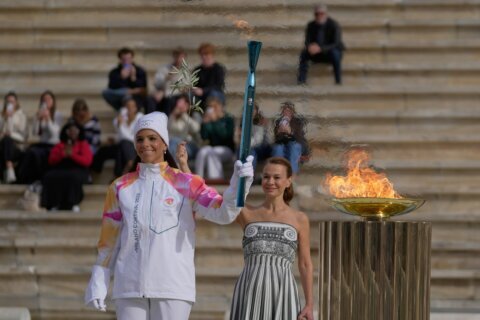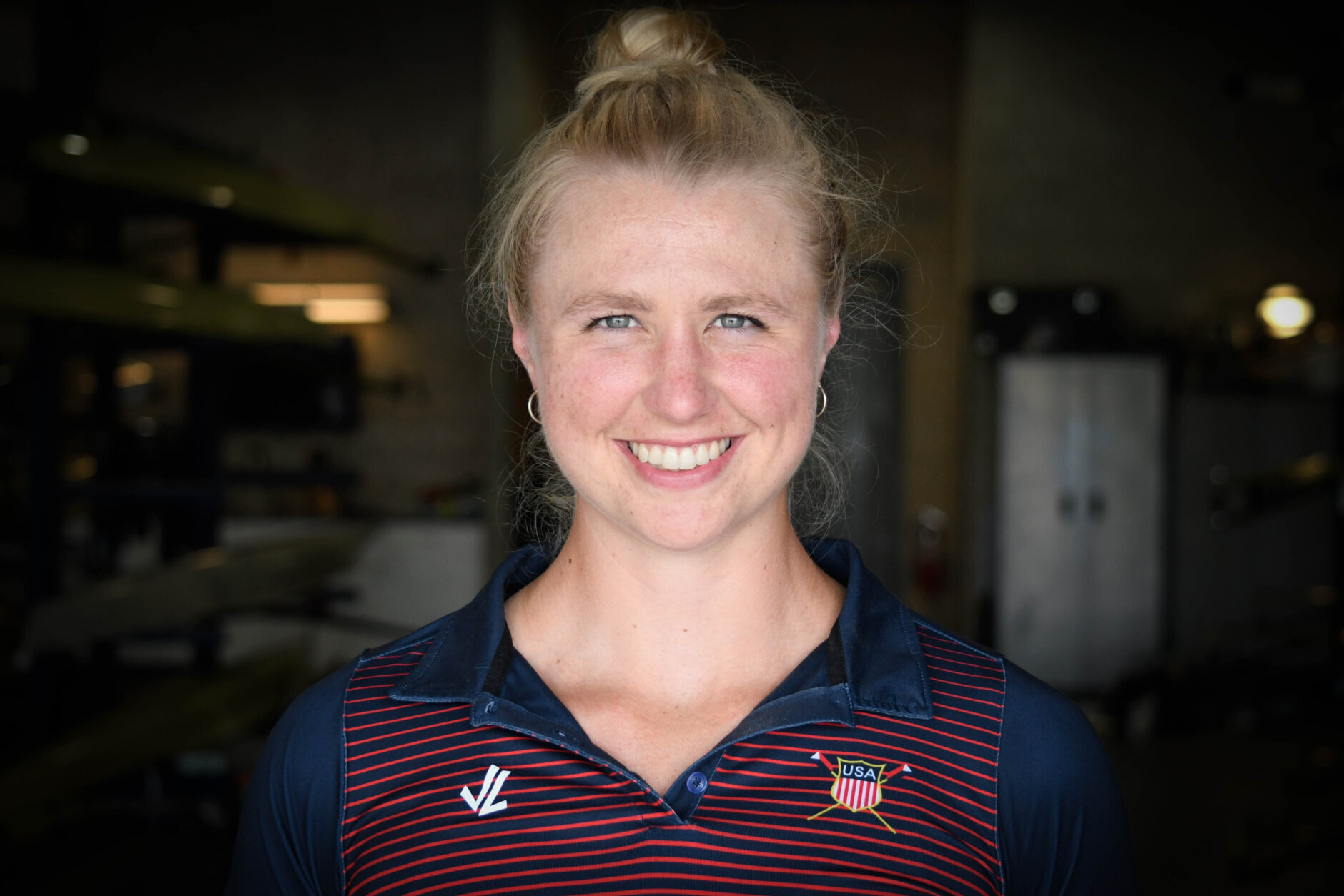
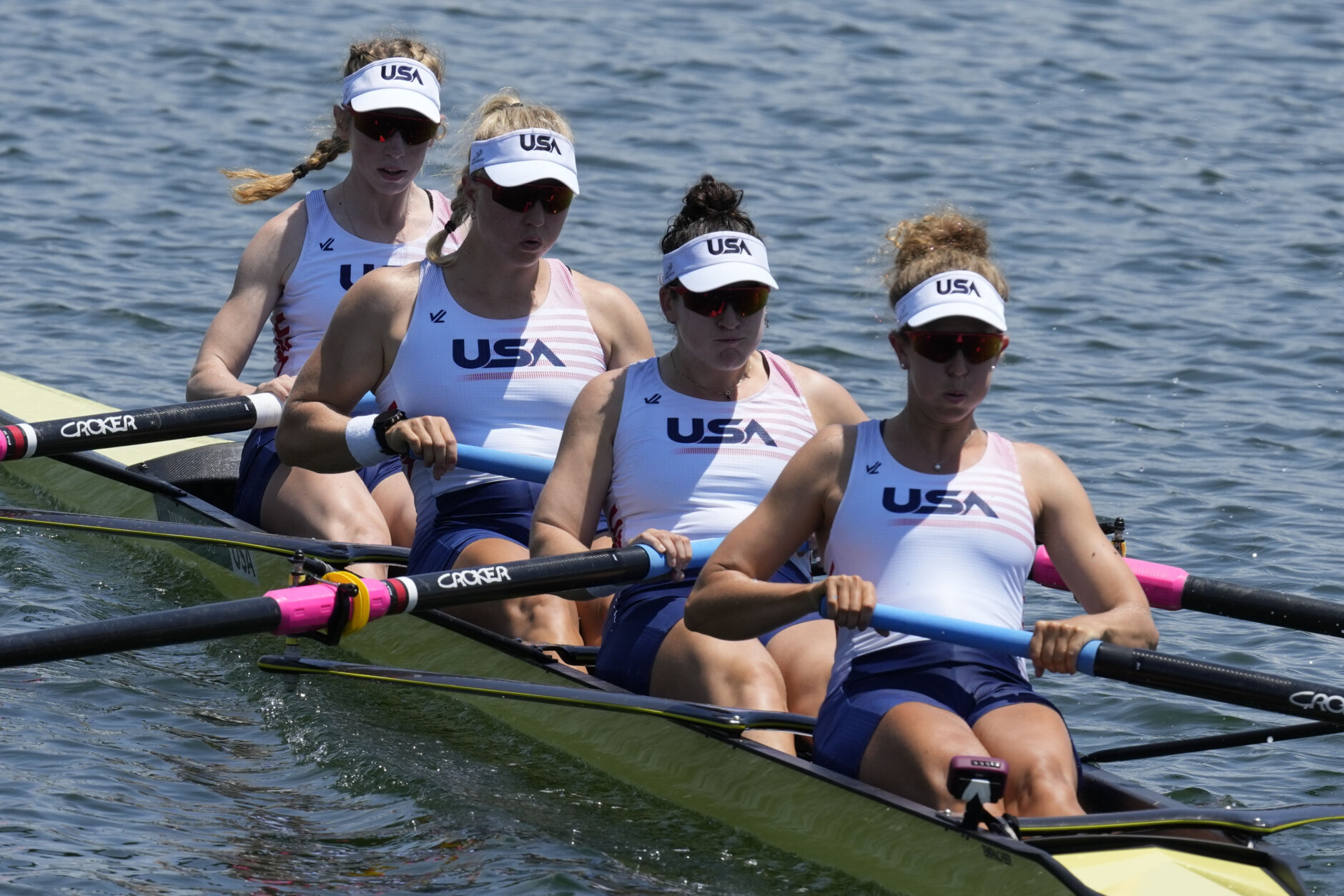
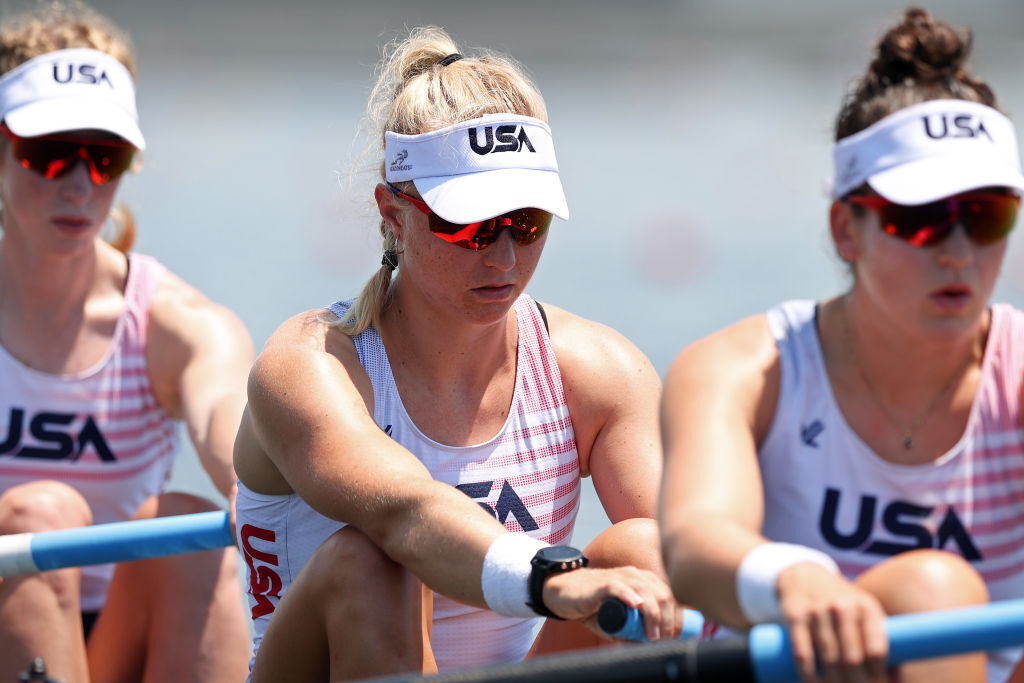
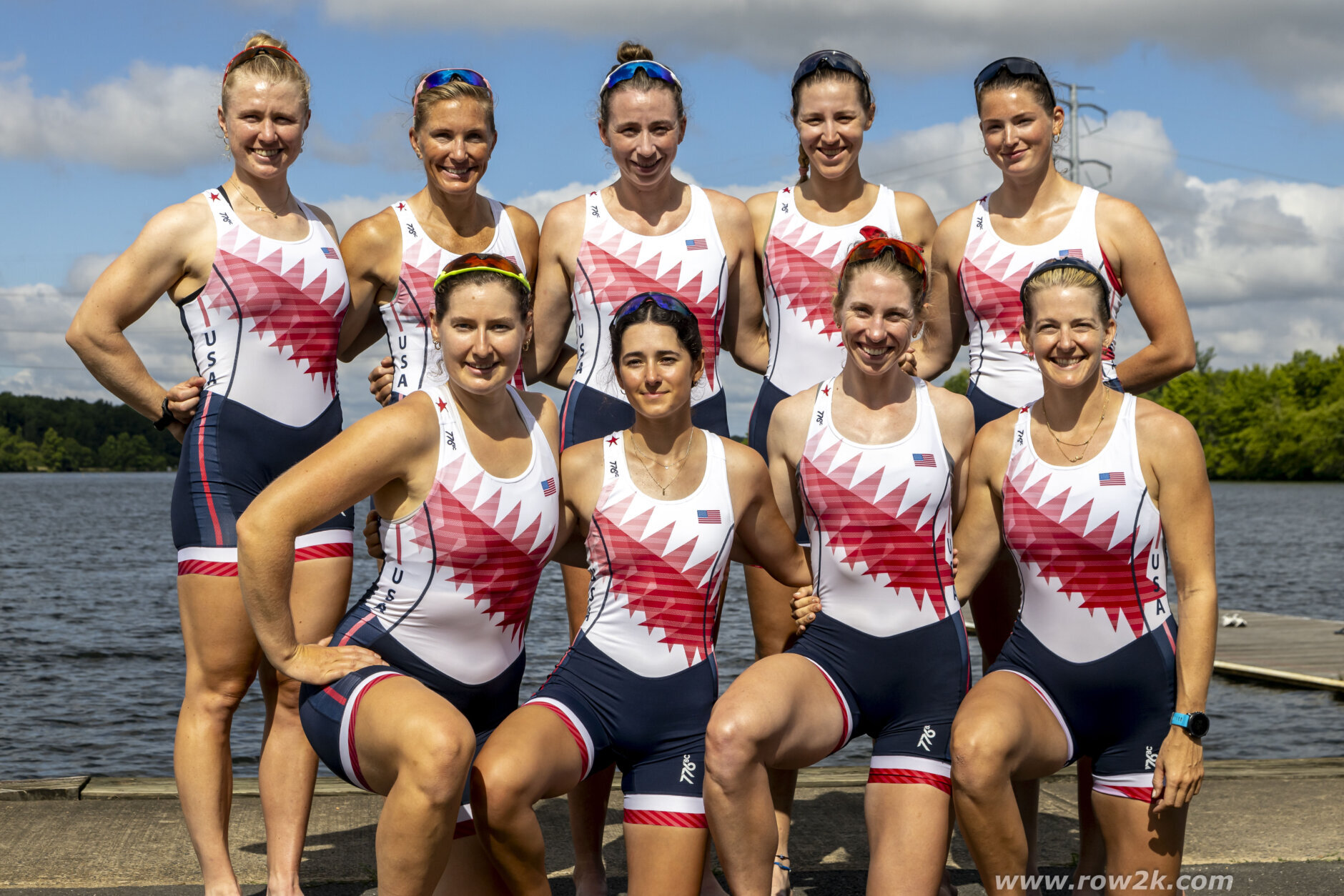



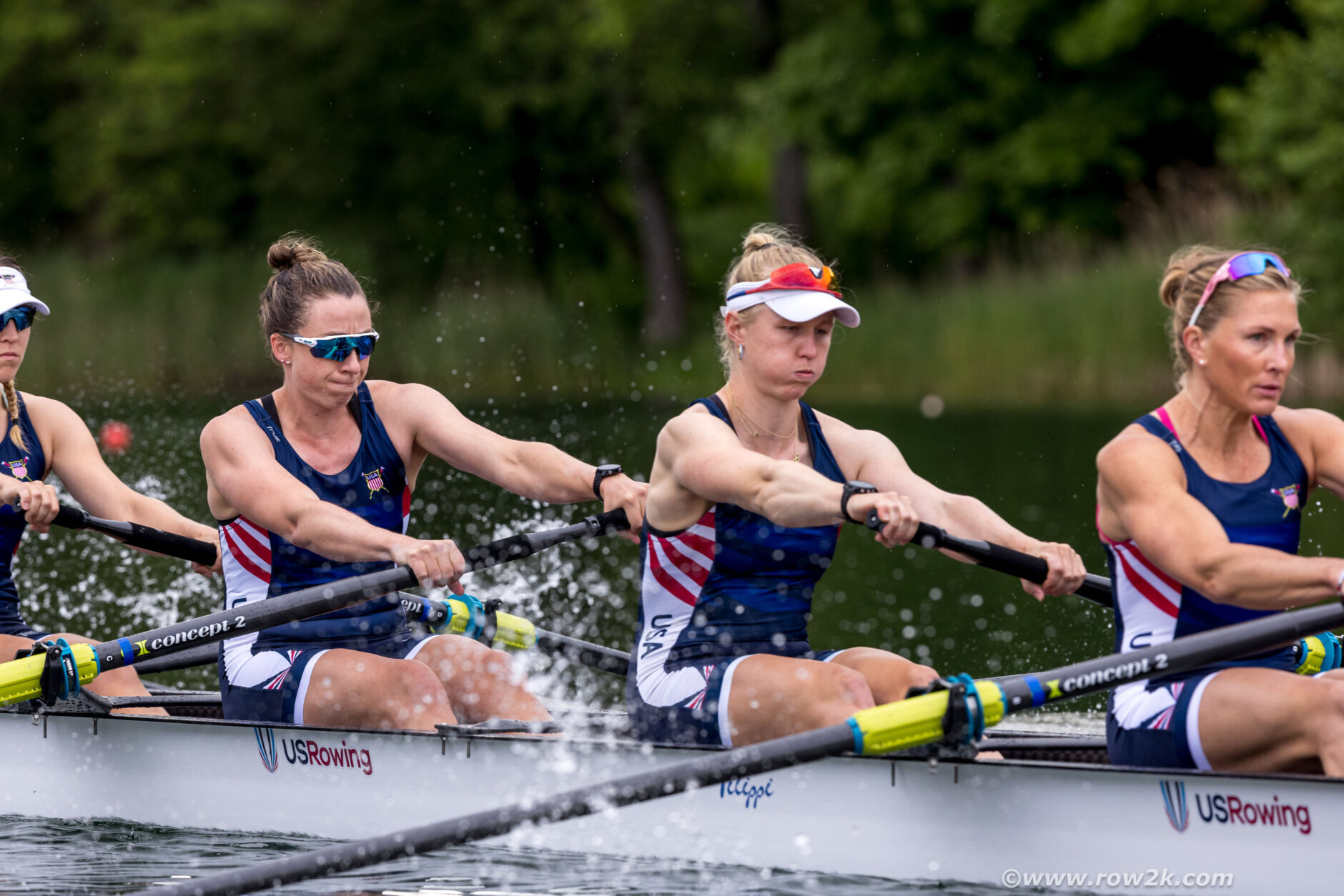
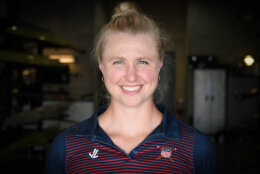
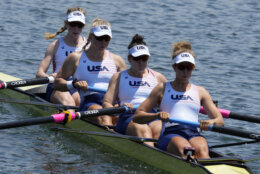
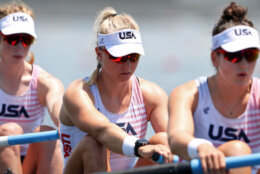

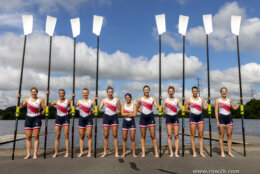
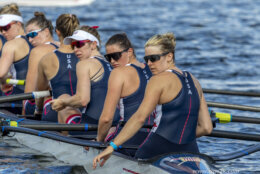
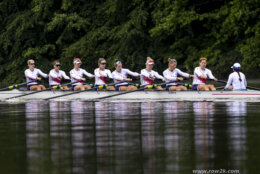
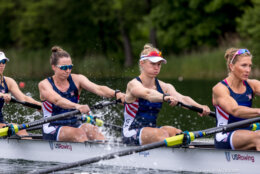
Growing up in McLean, Virginia, Claire Collins played almost every sport you can think of. Soccer, basketball, lacrosse and volleyball — and she swam, too, in the summers with the Northern Virginia Swimming League.
But it was a sport she took up in high school that has made her a two-time Olympian, sending her to the Tokyo Games in 2021 and again this summer to the Olympics in Paris.
Collins, 27, is rowing in the Women’s Eight this time, where she will occupy six-seat — part of the middle four or the “engine room” of the boat, which is typically made up of the strongest and most powerful rowers. Collins’ Olympic debut in Tokyo was in the Women’s Four, which finished seventh.
The Women’s Eight is part of one of the “greatest sports dynasties” in U.S. sports, Collins said. The U.S. women have won Olympic gold in that competition in 2008, 2012 and 2016. They came in fourth in Tokyo in 2021.
“We’re appreciative of all the women that came before us and taught us how to win and taught us how to go really hard and race really hard and be gritty and aggressive,” Collins said, adding that she grew up watching the women in those gold-medal-winning boats.
“It’s pretty crazy that I’m sitting in one of those seats now,” she added.
- Meet the DC-area athletes who’ve qualified for the Paris Olympics
- From a fighter to a boxer: Md.’s Jahmal Harvey hopes to ‘seize the moment’ at Paris Olympics
The women in the Paris boat with Collins include Molly Bruggeman, Margaret Hedeman, Meghan Musnicki, Olivia Coffey, Regina Salmons, Madeleine Wanamaker, Charlotte Buck and coxswain Cristina Castagna.
Collins said the new crew is balancing what it means to be part of the women’s eight and the “great privilege” of continuing the legacy started by other women rowers before them.
Collins said Romania and Canada, which won the gold in Tokyo, as well as Great Britain and Australia, are some of their biggest competitions. The U.S. women’s first qualifying race is scheduled for July 29.
It’s about the day-to-day work
After elementary school at Washington Episcopal School in Bethesda, Maryland, Collins went to Deerfield Academy in Massachusetts, where a lot of the swimmers either did rowing or water polo in the spring.
Collins went to a captains’ practice for both sports, and “rowing kind of got off to a pretty good start my freshman year of high school, so I decided to go with that one,” she said.
Although she didn’t start rowing until high school, her successful rowing career at Princeton University, where she was recruited for the sport, led her to the decision that she wanted to do more with it. Halfway through college, she asked her coach what she needed to do to get invited to try out for the national team.
“I’m a big goal setter. And I’ve always set goals in stages,” Collins said.
She originally aimed for the Paris Olympics but got fast-tracked to Tokyo, which was earlier than she had planned but was “definitely a huge bonus.”
For Collins, however, what she really loves about rowing is the day-to-day work.
“I focus on setting little goals, try and just improve a little bit every day,” she said.
And while the 2,000-meter Olympic event may finish in less than 6 or 7 minutes, “it is really a whole several years’ worth of a journey,” Collins said.
That includes waking up early every morning for three-hour on-the-water practices year-round in any type of weather; holding down a job; and also making time for afternoon practice, which could be indoor practice on the rowing machine, the bike or weights.
“I think back to all the little moments of pushing a little bit harder on a piece or cheering a friend on or learning how to move my body better in the boat or pushing through a mental barrier that I had,” Collins said. “To be a part of that is really, really special.”
Working to make the sport more accessible
While members of the U.S. Olympic rowing teams come from all over the country, the Olympic roster can look like an Ivy League yearbook with many athletes rowing for colleges such as Harvard, Princeton, Dartmouth, Cornell, Columbia, Brown and Stanford.
A DEI strategy presentation from U.S. Rowing — the entity that governs the sport — called for raising awareness of the sport as a “viable option for anyone with interest,” as well as to “eliminate barriers to rowing, and upend presumptions — and some realities — about the sport’s exclusivity.”
Andy Waiters, a coach at Capital Rowing Club in D.C., said one of the biggest things that make rowing inaccessible is the cost. “It’s an expensive sport,” Waiters said.
The expense includes the equipment, which can range from $8,000 for a single scull to more than $40,000 for an eight-person racing shell, not counting the oars. There’s also coaching fees, club memberships, uniforms and race fees among other expenses that go with participating.
The Capital Juniors program at Capital Rowing Club is a nonscholastic team that comprises many kids from different schools in D.C., Maryland and Virginia, including School Without Walls, Washington Latin Public Charter School, Eastern High School and H.D. Woodson High School.
Waiters, who coaches the youth program, said the club tries to target students in Wards 6, 7 and 8 to make sure the sport is accessible to everyone and it’s well-represented with D.C. kids.
The program also tries to minimize the cost, so it’s “not a hindrance to anyone” who wants to try it, Waiters said.
One of the things the club has done to expose students who may lack access to the sport is participate at events, such as the H Street Festival and Fight for Children’s Youth Sports Day at RFK Stadium. At last year’s Youth Sports Day, Waiters said the club brought in a boat of each size and rowing machines or ergometers to catch people’s eyes as they walked by.
Before leaving for Europe earlier this month, Collins and some fellow Olympic rowers cheered on elementary and middle school students in Trenton, New Jersey, during an indoor erg race — the first Capital City Indoor Championships.
View this post on Instagram
Collins said the energy from the kids, the parents and the teachers was amazing.
“We have to learn from them and their excitement and their energy,” Collins said, when asked about ways to make the sport more accessible. Spotted by spectators from the banks of the water, rowing can seem distant or inaccessible. But the rowing community is an “incredibly welcoming” one, she said, with members who want to share the sport with everyone.
Waiters agreed and said that the sport fosters “more teamwork” than any other sport.
“If one person is out of sync in a boat of eight people, it can throw off the entire boat,” Waiters said. It also fosters trust and reliance on your team. Moreover, it develops leaders.
The sport can be daunting coming in as a new rower, and “we require a lot from these kids,” Waiters said.
This includes how they comport themselves at the boathouse, being responsible for taking care of the equipment and even being part of recruitment efforts and helping with social media.
Waiters recalled the words of one of his coaches that once rowers enter the parking lot for practice, “you have to flip a switch” that you’re going to be there for the people you’re rowing with.
It’s good advice whether you’re a new rower or it’s your second trip to the Olympics.
“All you can control is executing your own race, and putting together your best effort,” Collins said.
Get breaking news and daily headlines delivered to your email inbox by signing up here.
© 2024 WTOP. All Rights Reserved. This website is not intended for users located within the European Economic Area.


